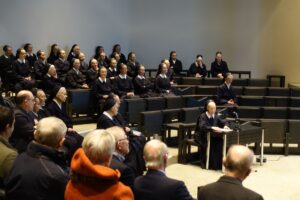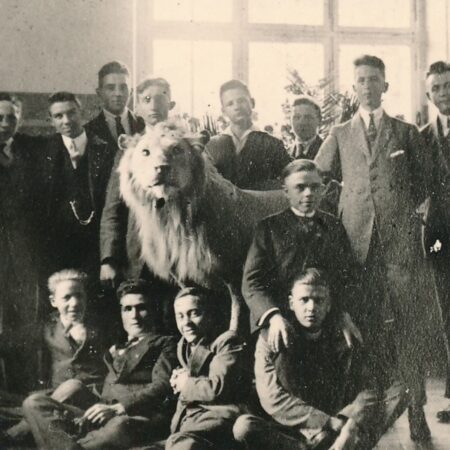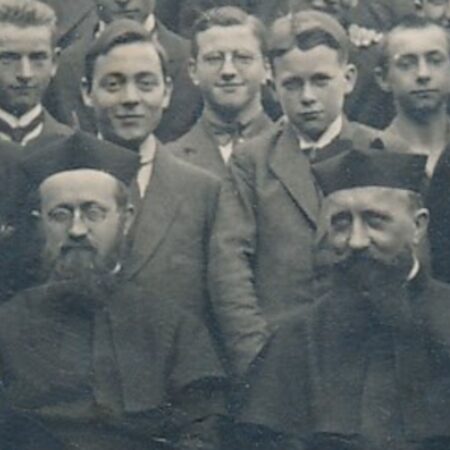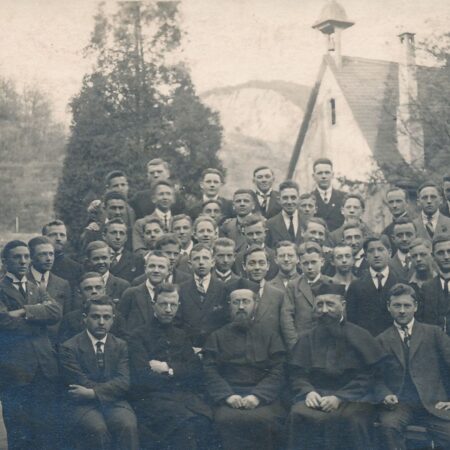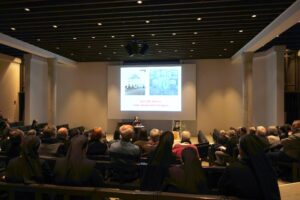
Father Kentenich in Engers:
One Hundred Years Ago
For years, it has been a custom that around the time of Father Joseph Kentenich’s name-day and birthday, the Schoenstatt family gathers in the Father Kentenich House to trace his footsteps and to get to know him better. After a longer break, it is a joy for many that this series has been resumed and that Sister M. Pia Buesge is focusing on rather unknown details of Father Kentenich.
Sister Gisela-Maria, the director of the Father Kentenich House, greeted everyone who came to the birthday celebration of Father Kentenich this year. Among them were guests from Engers, Germany, which is only a few kilometers from Schoenstatt. We focused on this place at this event, because Father Kentenich lived there 100 years ago.
Tracing the Footsteps of Father Kentenich in Engers
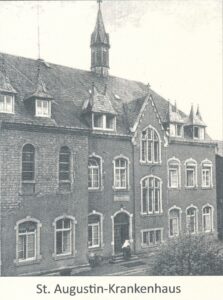
In the fall of 1920, Father Kentenich moved to Engers. He did this for various reasons. When the Pallottine priest who had been the chaplain for the St. Augustine Hospital in Engers suddenly died Father Kentenich took over this task. Father Kentenich was able to recover his health there, and at the same time, he cleared the way for his successor as spiritual director in Schoenstatt to make a new start.
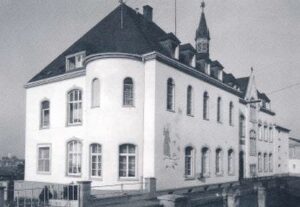
The sister who was the receptionist at St. Augustine’s at the time later related the following about Father Kentenich’s arrival: A young Pallottine accompanied him and afterwards said to the nurse: “You don’t know what a treasure we have brought into your house. He is a saint.”
It is surprising that there is a wealth of written material from the good four years that Father Kentenich lived in Engers. We owe this primarily to the research of Sister M. Magd Kessler who was born in Engers and who meanwhile has died. Sister M. Pia directed our attention to three focal points of Father Kentenich’s work in Engers, which were illustrated with numerous photos:
1. Chaplain in the Hospital in Engers
Sister M. Erika Koelzer, who now lives in Borken, is also from Engers. She gifted those present with an impressive testimony about the work of Father Kentenich as hospital chaplain. As a teenager, she learned about this time from her grandmother. Among other things, her grandmother said:
“In the fall of 1920, when my mother was a patient in the St. Augustine Hospital, Father Kentenich was staying there. He said Holy Mass every morning and visited the sick. My mother must have been a concern that weighed heavily on his heart. (Note: She was a young widow with five children.)
She had a critical heart condition and was dying. Father Kentenich understood all her worries and needs … He prepared my mother for death by means of religious teachings and prayers … I am still very impressed by her encounter with Father Kentenich …”
2. A Heart for the Orphans of the First World War
Franciscan Sisters had established a temporary house for war orphans in an old villa in a park in Engers. Father Kentenich lived in this house for a while. In a report by Kätchen Breitbach, we heard how he took fatherly care of these children. He helped them with their homework. He played with them in the park. He prepared them for their First Communion. He gave special attention to problem children. For Christmas he gave them gifts that he procured from businesses in Engers. On the feastday of St. Nicholas he assumed the role of St. Nicholas for the children.
3. Founder of the First Group of Young Men
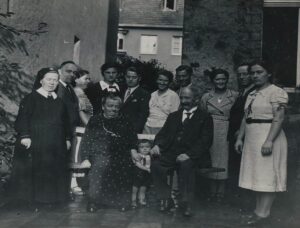
It was Father Kentenich himself, who founded the first Schoenstatt group for young men. There is likewise a report by Sister M. Magda about that. The boys came enthusiastically to the weekly group meeting. Occasionally Father Kentenich visited the members in the home of their parents; for example, in the home of the Kessler family. Three of their daughters later became Schoenstatt Sisters of Mary. All three of them had met Father Kentenich in Engers.
Sister M. Pia drew our attention to Karl Kessler, one of the sons. From his youth, he was marked by illness and Father Kentenich listened emphatically to him. He helped him bear his suffering and to mature into a happy young man—some photographs provided credible evidence of this. He died in 1944 in a prison in Russia.
There was a very moving testimony about the last phase of Karl’s life. Excerpts from letters were read by Werner Johann Kessler, a nephew of Karl. They showed the religious depth he attained.
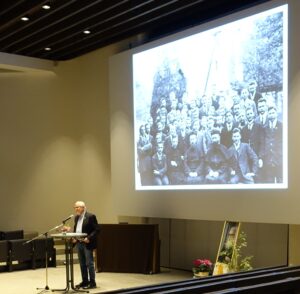
Father Kentenich even expressed the wish—until now unfulfilled—that someone would write a biography about Karl Kessler.
This final, very moving testimony led to a communal prayer for the persecuted Christians and the song “Protect us with Your Mantle.” Afterwards, the priests present gave the evening blessing.
We went home grateful, thoughtful and amazed. We had been gifted by the valuable insights into the lives of people who were changed through their experiences with Father Kentenich. How many people might have actually met Father Kentenich during his four years in Engers! How did he shape their lives?
